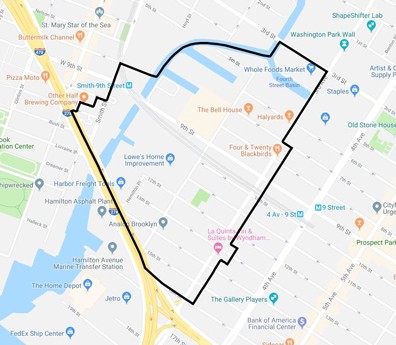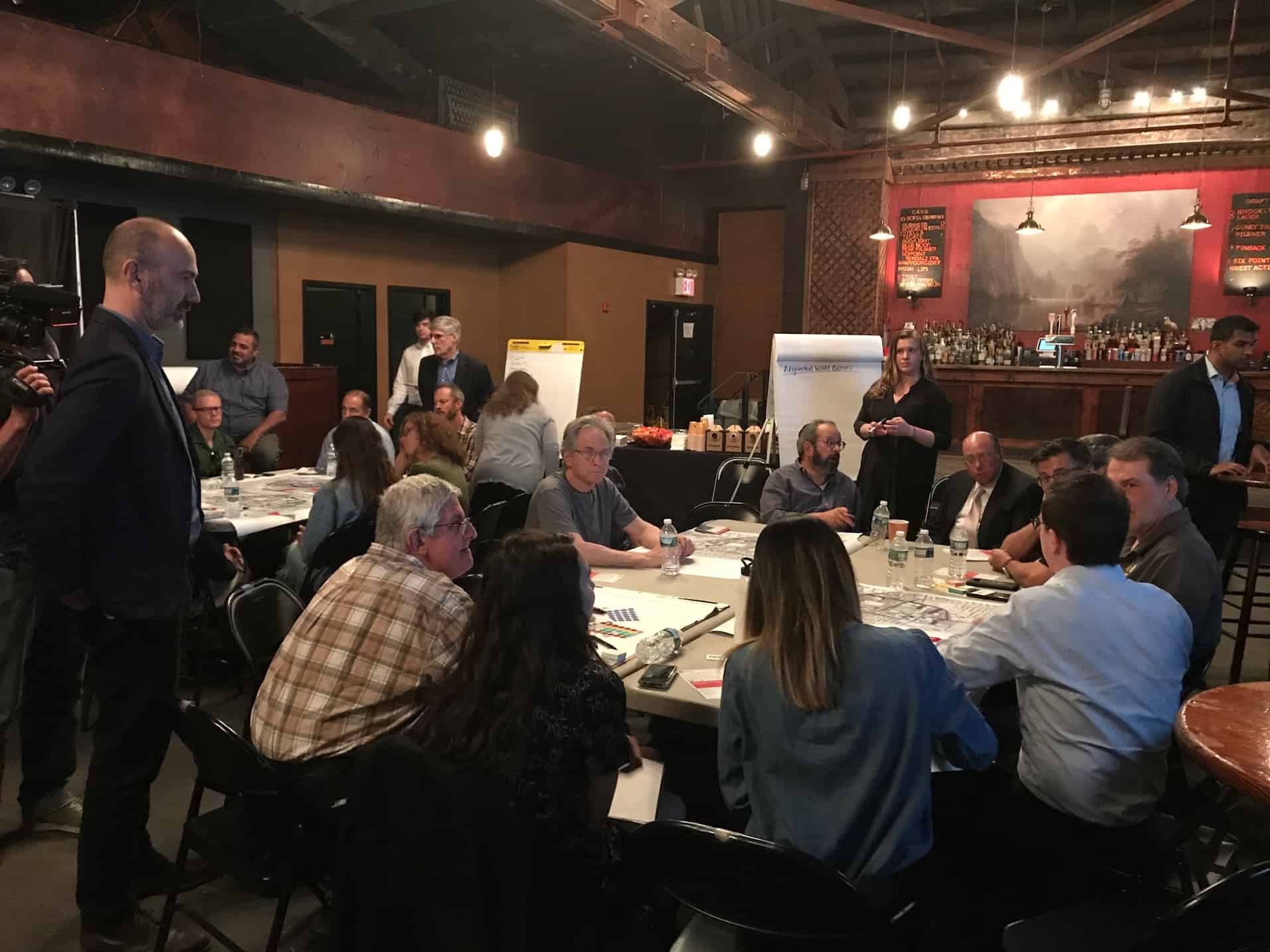
Manufacturing businesses, including contractors and repair shops that have been in Gowanus for years, have been wondering about their futures will look like once giant skyscrapers become their neighbors.
The southern portion of Gowanus has been part of the Southwest Brooklyn Industrial Business Zone (IBZ) since 2006. The IBZ is a zoning designation created by the Bloomberg administration to supposedly protect manufacturing areas from encroachment by residential development, which usually outprices land and leaves industry homeless. This is exactly what opponents of the streetcar plan (BQX) fear.
DCP put fear in the hearts of many Gowanus businesses when they neglected to include the IBZ in their study area. Paul Basile, president of the Gowanus Alliance, a business group, told City Limits magazine last year: “I think they [DCP] are trying to paint the picture with too many colors. They are going to create huge quality-of-life issues.”
The magazine goes on to explain: “What he means is, placing industrial businesses near an expanding residential neighborhood is bound the create use conflicts – heavy trucks trying to navigate around bike stands, manufactures struggling to get deliveries in around the crowds gathered for recreational axe-throwing, and the noise that leads to resident complaints and city fines – industry almost always loses.”
In response, DCP held a couple of meetings last month to address the subject of Gowanus and manufacturing.
Gowanus IBZ Visioning Study
City Planner Jonah Rogoff, who led one of the roundtable meetings, reiterated to attendees that the visioning study’s purposes and goals are to support business growth, create a land use framework, and identify priority infrastructure and workforce development needs that can reinforce the area as a 21st-century jobs hub for industrial and commercial uses.
“[The] goal is not an area-wide rezoning, but a shared framework to guide future development, infrastructure improvements, and policy,” one slide read behind Rogoff during the presentation.
Group discussions
The June 12 roundtable broke out into three large groups, with DCP facilitators leading discussions and other agencies’ representatives answering any relevant questions and listening for feedback. For instance, one table had representatives from the Gowanus Canal Conservancy and from the Departments of Small Businesses, Environmental Protection, and Transportation, as well as real estate, construction and studio stakeholders. For the next hour, stakeholders talked about the assets and challenges of operating in Gowanus, their vision for neighborhood improvements and their priorities moving forward (including space and workforce needs).
Some concerns and respective recommendations that came up included: infrastructure upgrades to help flooding overflow; better public transit (i.e. bike parking, car sharing, shuttles); more accessibility into loading bays; traffic calming (by Whole Foods and BQE entrances, for example); lifting or lowering parking requirements; and allowing appropriate higher densities in certain areas.
A hope that redevelopment would and should be gradual also came up in conversation, so that sudden and immediate displacement, especially of mom-and-pop shops, wouldn’t occur.
“I don’t mind growth, but not at the cost of small businesses,” a music studio owner said.
When the room later reconvened, it was clear that stakeholders want more space, more flexibility and an increase regarding vertical space requirements. Others said loading and unloading spots should be changed and that there should be job training with NYCHA residents for job growth.
Post-meetings
Following the two meetings, Basile said that the Gowanus Alliance was happy with the turnout, noting that many new businesses, along with a variety of property owners and older area businesses, had attended. He said that he hopes any future environmental impact studies will include a further look at other citywide rezonings and see how manufacturing areas were affected after the fact. This, he believes, is an opportunity to see what Gowanus’s future may be and how to prevent any negative ramifications before the rezoning process begins.
“We are thankful for Councilman Brad Lander for allowing us to participate and for supporting businesses, and also thankful for DCP for having these conversations because it shows that they are effectively trying to address the issues,” Basile said on behalf of his group. “We’re happy to be at the table and we’re glad that this conversation is happening now rather than later.”
DCP will compile all the roundtable notes into one summary over the summer, and will continue to get feedback and information from the community. In the fall, the agency will develop and share its preliminary recommendations, and draft a final land use framework and vision plan.
Top photo by DeGregorio
Author
-

George Fiala has worked in radio, newspapers and direct marketing his whole life, except for when he was a vendor at Shea Stadium, pizza and cheesesteak maker in Lancaster, PA, and an occasional comic book dealer. He studied English and drinking in college, international relations at the New School, and in his spare time plays drums and fixes pinball machines.
View all posts
George Fiala has worked in radio, newspapers and direct marketing his whole life, except for when he was a vendor at Shea Stadium, pizza and cheesesteak maker in Lancaster, PA, and an occasional comic book dealer. He studied English and drinking in college, international relations at the New School, and in his spare time plays drums and fixes pinball machines.
Discover more from Red Hook Star-Revue
Subscribe to get the latest posts sent to your email.











